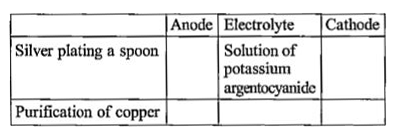Explain some practical applications of beats.
Step-by-Step Solution
Step 1: Understanding Beats
Beats occur when two sound waves of slightly different frequencies interfere with each other. The result is a fluctuation in sound intensity, perceived as a "beating" sound. This phenomenon is crucial in various practical applications.
Step 2: Finding Frequencies of Unknown Tuning Forks
One of the most common applications of beats is in determining the frequency of unknown tuning forks. By sounding two tuning forks simultaneously, if they produce beats, the difference in frequency can be calculated. For example, if one fork has a known frequency and the other is unknown, the number of beats heard can indicate how close the unknown frequency is to the known one.
Step 3: Tuning Musical Instruments
Beats are also used in tuning musical instruments. When a musician tunes an instrument, they listen for beats between the instrument's sound and a reference tone. If beats are heard, it indicates a frequency mismatch, and the musician can adjust the instrument until the beats disappear, indicating that the frequencies are aligned.
Step 4: Adjusting Vibrating Lengths in Sonometers
In a sonometer, beats help in adjusting the vibrating lengths of strings. By ensuring that the frequencies of the strings match, the musician can adjust the lengths until the beats are minimized or eliminated, indicating that the frequencies are equal.
Step 5: Detection of Harmful Gases in Mines
An interesting application of beats is in detecting harmful gases in mines. By using two open organ pipes—one filled with pure air and the other with air from the mine—sounds can be produced. If the frequencies of the sounds produced are the same, no beats will be heard. If beats are heard, it indicates a difference in frequency, suggesting the presence of harmful gases affecting the air density.
Beats occur when two sound waves of slightly different frequencies interfere with each other. The result is a fluctuation in sound intensity, perceived as a "beating" sound. This phenomenon is crucial in various practical applications.
One of the most common applications of beats is in determining the frequency of unknown tuning forks. By sounding two tuning forks simultaneously, if they produce beats, the difference in frequency can be calculated. For example, if one fork has a known frequency and the other is unknown, the number of beats heard can indicate how close the unknown frequency is to the known one.
Beats are also used in tuning musical instruments. When a musician tunes an instrument, they listen for beats between the instrument's sound and a reference tone. If beats are heard, it indicates a frequency mismatch, and the musician can adjust the instrument until the beats disappear, indicating that the frequencies are aligned.
In a sonometer, beats help in adjusting the vibrating lengths of strings. By ensuring that the frequencies of the strings match, the musician can adjust the lengths until the beats are minimized or eliminated, indicating that the frequencies are equal.
An interesting application of beats is in detecting harmful gases in mines. By using two open organ pipes—one filled with pure air and the other with air from the mine—sounds can be produced. If the frequencies of the sounds produced are the same, no beats will be heard. If beats are heard, it indicates a difference in frequency, suggesting the presence of harmful gases affecting the air density.
Topper's Solved these Questions
Similar Questions
Knowledge Check
Forth floatation process for the concentration of sulphide ores is an illustration of the practical application of :
AadsorptionBabsorptionCsedimentationDcoagulationFroth floatation process for the concentration of sulphide ore is an illustration of the practical application of
AadsorptionBabsorptionCsedimentationDcoagulation
Name one practical application of nuclear fission.
View SolutionWrite an account of practical applications of genetic engineering
View SolutionCopy and complete the following table which refers to two practical applications of electrolysis.

View SolutionMention two practical applications of thermal expansion in daily life.
View SolutionWhat is ultrasound ? Describe some of its practical applications ?
View SolutionName one practical application of Archimedes' principle.
View Solution
